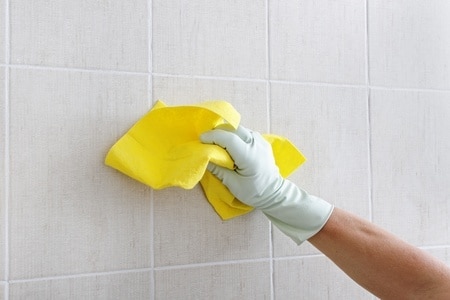1.3K
Nobody likes the dark spots that often appear in bathrooms and can be harmful to humans and animals. In this practical tip, we show you how you can fight mould with hydrogen peroxide without taking any risks
.
Why use hydrogen peroxide for mould control?
With a smaller mould infestation, you can take matters into your own hands and fight it with the right means. For large infestations, however, the help of a professional is necessary.
- Hydrogen peroxide, also known as H202, is normally used in medicine as a disinfectant or bleaching agent. When used in water and free oxygen, it decomposes.
- You can buy a three per cent solution in pharmacies and drugstores. They also sell 70 and 80 per cent alcohol or isopropanol, which also helps against mould.
- Hydrogen peroxide has an oxidising effect on mould. The affected areas are disinfected by destroying the fungal cells. In the case of black mould, it additionally functions as a bleaching agent, which results in an improvement of the coloured residues.
- Safety Instructions: H202 is non-flammable, however you must wear a mouth guard and acid gloves when using it. The agent can damage your upper layers of skin if you do not protect yourself adequately.
Application of hydrogen peroxide
If you want to use hydrogen peroxide against mould, there are a few things you should definitely keep in mind to avoid putting yourself at risk.
- Lock the doors to other rooms and open the windows in the infested room.
- Use a PE film from painting supplies to cover your furniture and carpets.
- Make sure to ventilate the mould spores outside.
- Wear the gloves and mouth guard at all times to avoid putting yourself in danger.
- Wet your wallpaper or water-soluble paint and remove it from the wall. Dispose of the wallpaper or used cloths in the household waste via sealed plastic bags.
- Now coat the surface in a radius of at least 50 centimetres around the infested area with the hydrogen peroxide solution. Use a wide, soft brush to do this.
- In the meantime, carefully dispose of the masking film in the household waste.
- After the spot has dried, paint the wall with lime or silicate paint. Do not use paints containing glue or a new wallpaper.
- Finally, wipe down your furniture with a damp cloth and wash any fabrics that are in the room.
After about an hour, wipe the treated area with a damp cloth. Now wait until the area is dry.
*** Translated with www.DeepL.com/Translator (free version) ***
